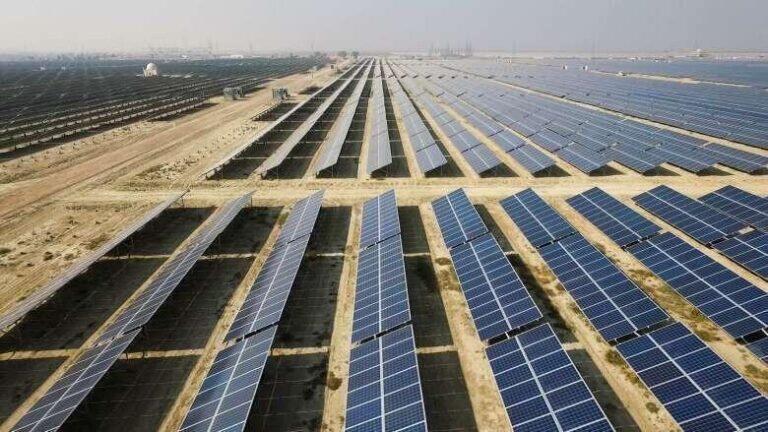
|
Getting your Trinity Audio player ready...
|
In the evolving economic landscape of Pakistan, the relationship between luxury consumption and agricultural constraints has become increasingly significant. While the growing demand for luxury goods reflects economic development in certain sectors, it simultaneously exacerbates existing challenges in the agricultural and mass-producing industrial sectors. This duality of growth and constraint raises pertinent questions about Pakistan’s economic sustainability and the long-term impacts of policy decisions.
Luxury Consumption: A Growing Trend in Pakistan’s Upper Echelons
Luxury consumption is typically associated with wealthier segments of society, and it serves as an indicator of the economic standing of a nation’s affluent class. In Pakistan, this trend is becoming more pronounced, especially among urban elites. As disposable incomes increase among the upper-middle class, luxury goods and services become a key component of their consumption habits. The consumption of luxury goods such as high-end automobiles, lavish real estate, expensive furniture, and premium educational services signals a shift towards a more consumer-driven economy, despite its challenges.
Luxury Goods and the Rising Demand for SUVs
One of the most visible manifestations of luxury consumption in Pakistan is the market for sports utility vehicles (SUVs). The estimated market size of SUVs in Pakistan is approximately $1.4 billion, with a steady growth rate. While some of these vehicles are locally assembled, a significant portion of them are imported, contributing to the outflow of foreign currency. As the demand for luxury cars increases, so does the pressure on Pakistan’s foreign exchange reserves. This trend is evident during periods when foreign exchange reserves are stable or growing, which further fuels the market.
The Luxury Housing Sector
Housing is another critical area where luxury consumption is visible. High-end homes are not just about shelter; they are status symbols, decorated with expensive furniture, modern appliances, and state-of-the-art infrastructure. The demand for luxury housing units is on the rise, driven by affluent buyers in major cities like Lahore, Karachi, and Islamabad. These homes are typically furnished with luxury goods and materials imported from abroad, including high-quality flooring, designer lighting, and elegant hardware.
However, while luxury housing is thriving, there is a stark contrast in the demand for affordable housing. With an increasing number of low-income individuals and families, affordable housing is in high demand, yet builders and developers largely ignore this segment due to lower profit margins. Consequently, many of these individuals end up in informal settlements, where the housing conditions are far from ideal.
Educational Services and Luxury Consumption
Another area of luxury consumption is education. In Pakistan, a growing number of affluent families are opting for high-end schools that offer modern curricula, state-of-the-art facilities, and access to advanced technologies. These elite institutions charge premium fees, further contributing to the growing divide between the wealthy and the rest of the population.
The Economic Implications of Luxury Consumption
While luxury consumption represents a stable and profitable market for industrial capitalists, it also carries significant economic implications for the broader economy. Luxury goods and services often rely on imported raw materials or finished products, which strains the nation’s foreign exchange reserves. When the demand for such products increases, the country faces the risk of depleting its reserves, leaving less room for other essential imports.
The Strain on Foreign Exchange Reserves
In the face of growing luxury consumption, the balance of payments becomes increasingly difficult to maintain. The influx of luxury goods, particularly vehicles and high-end real estate materials, demands foreign currency, which depletes national reserves. This becomes a matter of concern, especially when the country is already grappling with fiscal deficits and external debt. The luxury consumption market, while beneficial for the industrial sector, puts an immense strain on the national economy’s sustainability.
The Agricultural Sector’s Struggles and its Impact on Industrial Growth
Pakistan’s agricultural sector, which plays a vital role in providing food security and raw materials for the industrial sector, is facing institutional bottlenecks. These bottlenecks, which range from outdated infrastructure and lack of access to modern technology to poor policy frameworks, hinder the growth and productivity of agriculture. As a result, the sector is unable to meet the growing demand for food and other agricultural products. This imbalance between demand and supply has far-reaching consequences.
Rising Food Prices and Economic Pressure
The rising demand for food, combined with supply-side constraints in the agricultural sector, has led to escalating food prices. High food prices put significant pressure on household budgets, especially for the lower-income segments of society. For industrial sectors that rely on mass production, such as the textile and manufacturing industries, rising food costs create a ripple effect that leads to higher operational costs and squeezed profit margins.
The Squeeze on Mass-Producing Industries
In the presence of institutional bottlenecks in agriculture and the continued expansion of luxury consumption, Pakistan’s mass-producing industries are facing severe challenges. As the demand for luxury goods increases, industrial capitalists shift their focus towards catering to this profitable segment, leaving the mass-producing sectors, which rely on agriculture and basic manufacturing, to struggle.
Impact on Labor and Employment
The expansion of luxury goods production, while creating jobs in certain sectors, does little to alleviate the broader employment challenges in the country. While luxury consumption leads to higher wages and employment for workers in the production of luxury goods, the broader industrial sector, particularly agriculture and basic manufacturing, faces stagnation due to higher food prices and limited growth opportunities. This divergence in industrial focus contributes to a widening gap between the wealthy and the general population.
Policy Challenges and Recommendations
Given the current economic dynamics, it is crucial for policymakers to rethink Pakistan’s approach to both luxury consumption and industrial development. A balanced approach that takes into account the long-term sustainability of the agricultural sector and the broader industrial ecosystem is necessary.
To address these challenges, policymakers need to:
- Diversify industrial investment: Instead of focusing solely on luxury goods, the industrial sector should also invest in mass-produced goods that meet the needs of the broader population.
- Improve agricultural productivity: By addressing institutional bottlenecks, investing in modern technologies, and improving access to water and land resources, the agricultural sector can be better equipped to meet the growing demand for food.
- Prioritize sustainable development: Policymakers should shift focus from short-term luxury consumption to long-term, sustainable development policies that address food security, energy needs, and environmental concerns.
- Enhance foreign exchange reserves: Ensuring that luxury consumption does not excessively deplete foreign exchange reserves is crucial. A diversified approach to imports and exports can help stabilize the economy.
Conclusion
Luxury consumption, while indicative of economic growth and prosperity for a select segment of society, also puts significant strain on Pakistan’s foreign exchange reserves and mass-producing industries. The expansion of luxury goods production, without a corresponding focus on agriculture and mass production, exacerbates existing economic challenges. To ensure a sustainable economic future, Pakistan must focus on reforming its agricultural sector, diversifying its industrial base, and adopting policies that promote long-term economic stability and equity.
Frequently Asked Questions (FAQs)
1. How does luxury consumption impact Pakistan’s economy?
Luxury consumption increases foreign exchange demand, which strains national reserves. While it benefits the industrial sector, it also exacerbates the country’s economic imbalances and fiscal challenges.
2. Why is the agricultural sector facing challenges in Pakistan?
Institutional bottlenecks such as outdated infrastructure, poor policy frameworks, and limited access to modern technology have hindered the growth and productivity of the agricultural sector.
3. How does luxury consumption affect food prices?
As luxury goods consumption rises, it diverts resources and attention from mass production sectors like agriculture, leading to higher food prices and increased economic pressure on lower-income segments.
4. What role does foreign exchange play in luxury consumption?
The import of luxury goods, particularly high-end vehicles and real estate materials, requires significant foreign currency, putting pressure on Pakistan’s foreign exchange reserves.
5. What should policymakers focus on to address these issues?
Policymakers should focus on improving agricultural productivity, diversifying industrial investment, and ensuring that luxury consumption does not excessively deplete foreign exchange reserves.
SEE ALSO:
https://skipper.pk/2024/11/18/climate-story-success-abroad-struggle-at-home/






